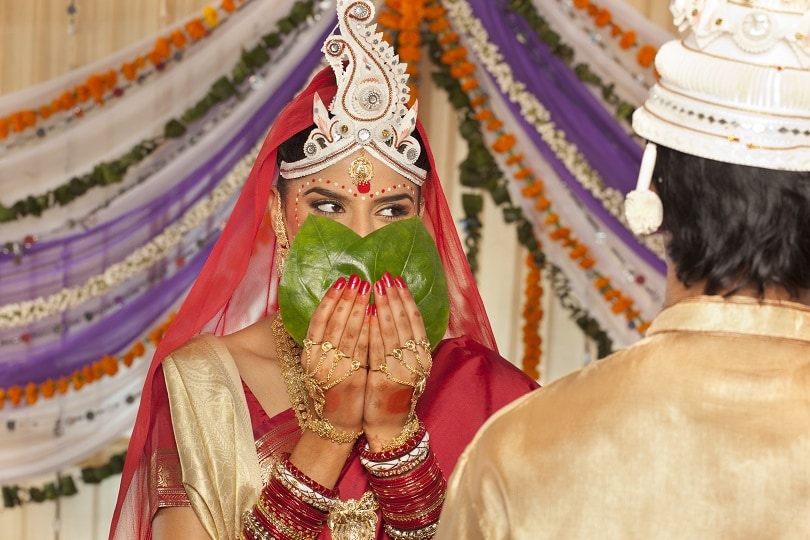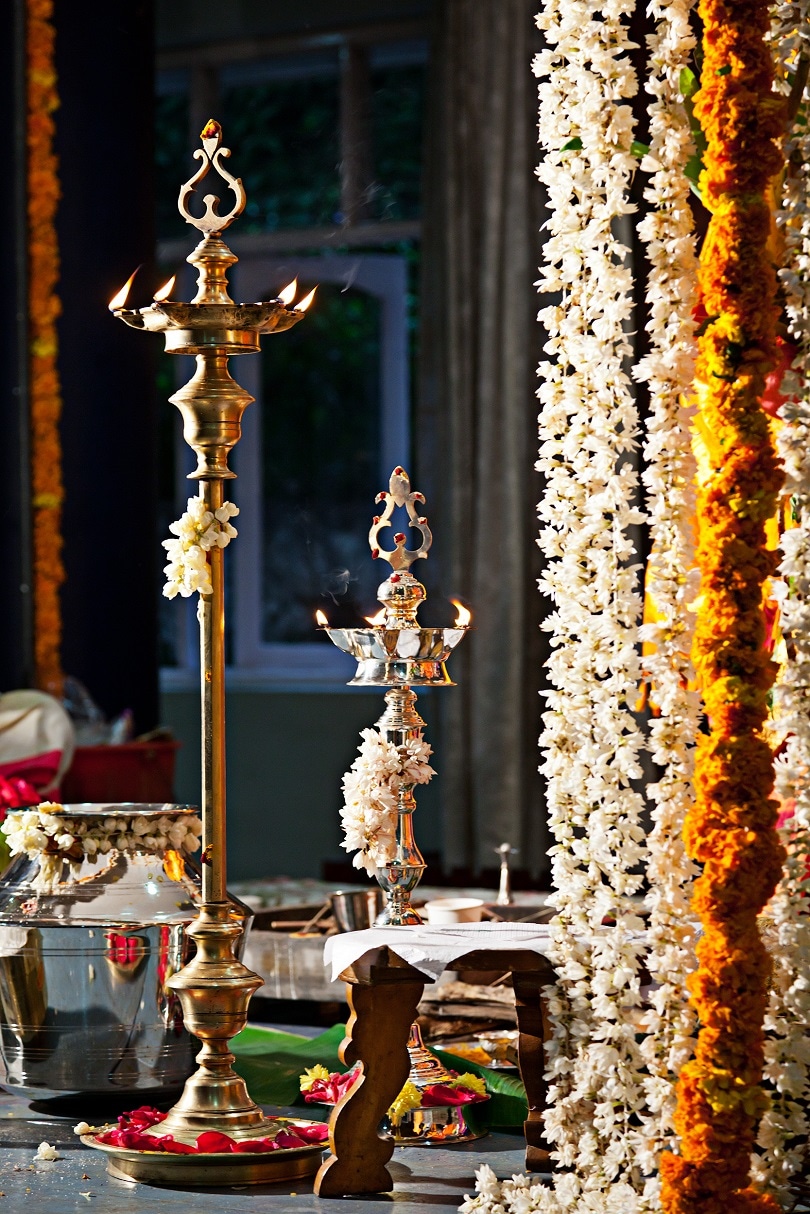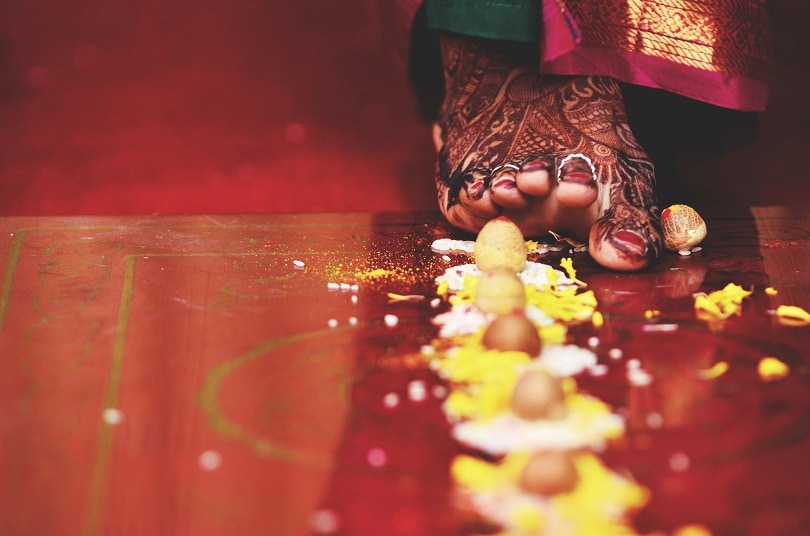An Indian wedding cannot be defined by just one set of rituals or one vision. Indian wedding traditions and customs are diverse. Every different state has a different set of traditions and culture. The true secularity of India reflects through the various kinds of Indian weddings we observe throughout the years, over generations.
Indian weddings can be simple, humble, and peacefully quiet. They can be a big fat pompous show of colours and riches. If we are to observe the various Indian wedding traditions, it is bound to get confusing. Subtle differences mark one custom from another, while some other traditions are totally different from the rest.
Foreigners take a deep interest in the traditional Indian wedding. But surprisingly enough, some of us Indians ourselves are not aware of the various types of Indian weddings. As the traditions are flexing to accommodate each other, with interstate and inter traditional marriages becoming the norm, we need to know about the various Indian wedding customs that exist.
Planning Wedding any time soon?
Then, Give us a call
08750287502
Some Indian wedding customs have stayed put from ages back while some have been incorporated from Western weddings, only recently. Despite the communal issues that surface due to politics, the Indian people are mostly very curious about different traditions and they like to pick up some customs from each other. This is why the Indian weddings have elaborate rituals that include the archaic traditions that are carried forward from forefather’s unknown, as well as new ones that are appreciated by many because of the thought that goes into them.
Here are some Indian wedding customs that are popular in their own regions and are slowly gaining popularity in other parts of the country.
- Bengali Wedding Traditions
Bengalis are progressive and Bengali girls and boys are quite a catch, to generalise of course. But the Bengali wedding traditions are still pretty old ones. They reflect the orthodox marriages of some generations past. For example, there is the ‘shubha drishti’, meaning something like the ‘holy meet’.

The Bengali bride enters hiding her face with betel leaves. The ‘saat paak’ in Bengali weddings don’t have the bride and groom encircling the agnee but the bride encircling the groom seven times. She has her face hidden through the seven circles. She is carried by four of her closest male family members or friends. At the end of the seven rounds, she steps down and stands in front of the groom, revealing her face so that the bride and the groom’s eyes can meet. This is ‘shubho drishti’.
Although every Bengali bride and groom knows each other before marriage, and most have been friends or in a relationship for quite a while, the tradition has stuck from times when this ‘shubho drishti’ was literally the first time the bride and the groom met each other in person. Strange it is. But this tradition sets the Bengali wedding apart from every other type of Indian wedding. The Bengali bride putting the betel leaves down and slowly looking up is the symbol of a typical Bengali wedding.
- Punjabi and Sikh Weddings
Punjabis and Sikhs are the most generous and enthusiastic Indians. Many people consider Punjabis and Sikhs to be the same people because the similar customs they follow and the area they live in. But there are subtle differences between Punjabis and Sikhs. Their traditions are similar, yet not the same. To generalise, they are both impulsive, fun loving, and warm hearted. So you can imagine what a Punjabi or Sikh wedding would be like, full of colours, lots of food, and a lot of dancing with innovative ideas for sangeet ceremony. But let’s take a look into the ceremonies and wedding rituals as well.

Punjabi wedding rituals begin with the bride’s maternal uncle gifting her the ominous churha. These are red and white bangles that signify the beginning of a wedding and mark the marital status of a woman, as married women wear them after the wedding as well. The Ghara Ghardoli ceremony follows. The bride and the groom are bathed in the holy water at the Gurudwara. All this takes place during the day because the garland exchange and final wedding rituals take place late in the evening.
Punjabi and Sikh weddings are long and stretch into the night. Sikh weddings happen during the day with the ardaas at the Gurudwara. The Punjabi wedding with the mantras and phere itself happens late at night, after the dinner. But there is not a tired soul, not a pair of droopy eyes. The enthusiasm of Punjabis and Sikhs are contagious. If you lack drive in your life, attend a Punjabi or Sikh wedding, or just visit a Sikh family. They are loving, and full of energy. Even if you are the quiet type, their energy is bound to rub off on you.
Some rituals of Punjabi and Sikh weddings are becoming popular in other types of Indian weddings too. Mehendi is already popular and as new event now a days Mehendi party are gracefully organized and has become quite the part of all Indian weddings, even the ones where it wasn’t traditionally a part. Roka, Varmala, Milni, are all originally Punjabi and Sikh wedding rituals.
- Gujarati Wedding Traditions
Gujratis are fun loving too. More than anything else, they are extravagant when it comes to any big ceremony. The Gujratis are the only ones whose enthusiasm come any close to that of Punjabis and Sikhs. They have this loud energy for weddings. There is a grandeur in Gujrati weddings because no matter how calculative they are about money in general when it comes to weddings, they splurge like it’s nobody’s business. Gujarati weddings are versatile in itself because there are many sub sects with a different set of rituals. Patels have a different set of rituals. The Naagars have some Brahmin rituals. Overall, a Gujarati wedding can be distinguished from other Indian weddings because there are some typical differences. A Gujarati mangal phera comprises just four phere instead of the usual seven in most other Indian wedding traditions. These four phere signify ‘Dharma’, ‘Artha’, ‘Kama’, and ‘Moksha’, the four pillars of a successful marriage according to Gujarati culture and belief. The Jaimaala in a Gujarati wedding is exchanged twice, instead of the usual just one time, or three times.
Some Gujarati weddings have the kanku kanya ritual. The bride is accepted with the vermillion being the only sign of marriage on her. She comes without any dowry, just as she is. This progressive ritual is typical to Naagar Brahmin Gujarati weddings. Gujratis are businesspeople and many marriages have their roots in business partnerships. But when it comes to the bride, she is given utmost importance, over any money or dowry. Or at least, so is the ritual.
- Tamil Weddings Traditions
Tamil weddings are the most elaborate. Yes, without a doubt, Tamil wedding rituals are the most elaborate. Some rituals are short while some are long but they are all essential. Even the modern Tamil weddings don’t skip any of the important rituals. They start with Panda Kaal Muhurtham and sumangali poojas to bless the wedding day and the married women at the wedding.
These rituals are followed by pallikai thellichal and naandi shrardham rituals. After all this, comes the engagement or Nichayathartham. A Ganesh pooja is mandatory at the beginning of the engagement. Then comes kumkum, chandan, and garlands, followed by the ring exchange .

Lagna pathirikai, mangala snaanam, Gauri pooja, Kashi yatra, pada pooja, and Oonjal follow. Then comes kanyadaan, muhurtham, and saptapadi to complete the wedding. The wedding itself is followed by three rituals, sammandhi maryathai, grihapravesh, and valeyadal. Tamil weddings seem to go on forever creating memories and exciting wedding stories. It brings out the seriousness Indian traditions are dealt with even in modern weddings.
- Maharashtrian Wedding Traditions
Maharashtrian weddings have elaborate rituals starting with the engagement. It is called ‘shakhar puda’. The bride is given a saree and some sweets as blessings from her new family to be. Kelvan and Haldi ceremonies take place at the bride’s home as well as at the groom’s home.

On the wedding day, the couple has a barrier of a silk shawl between them and the ‘mangalashtak’ is recited. There are quite a few rituals before tying the knot, one of the rituals being the bride and groom officially asking for their parents’ permission to do so. After this, the phere and the whole wedding process takes place. It all happens during the day.
After the wedding, it is time for Grihapravesh, which is typical to many Indian weddings. But in a Maharashtrian wedding, the bride and groom’s feet are washed with milk before they enter the bride’s new home. Maharashtrian wedding rituals are elaborate but the food and celebrations aren’t ignored. The food and hospitality the guests receive are bountiful.
These are some of the richest Indian wedding traditions as well as the commonest. They are versatile and elaborate, fun and serious. An Indian wedding has it all.
OR
Give us a Call
08750287502
- 10 Must-Haves Conference Room Facilities to Plan a Corporate Event - February 28, 2019
- Top 10 Ideas for an Awesome Birthday Catering - February 24, 2019
- 15 Wedding Entertainment Ideas that can Leave your Guests in Awe - February 23, 2019
- 15 Ways to Choose the Perfect Venue for your Birthday Party - February 22, 2019
- 15 Differently Styled Banquet Hall Settings for your Event - February 21, 2019
- 12 Pre Wedding Preparations for the Groom To Be - February 16, 2019
- 12 Incredible Benefits of Booking a Banquet Hall for any event - February 15, 2019
- Celebrate your 1st Wedding Anniversary in Style with these Fantastic Ideas - February 14, 2019
- 15 Elegant Outdoor Wedding Venues in Mumbai - February 13, 2019
- 15 Most Popular Banquet Halls in Kolkata to Organize a Vibrant Ceremony - February 10, 2019

